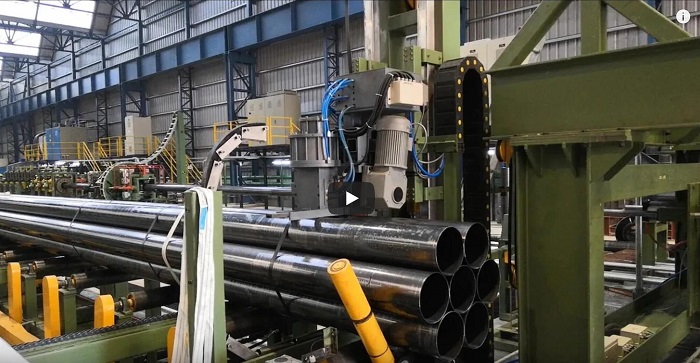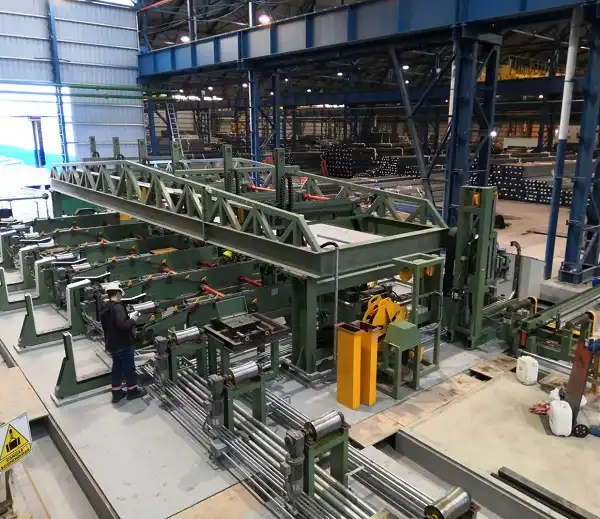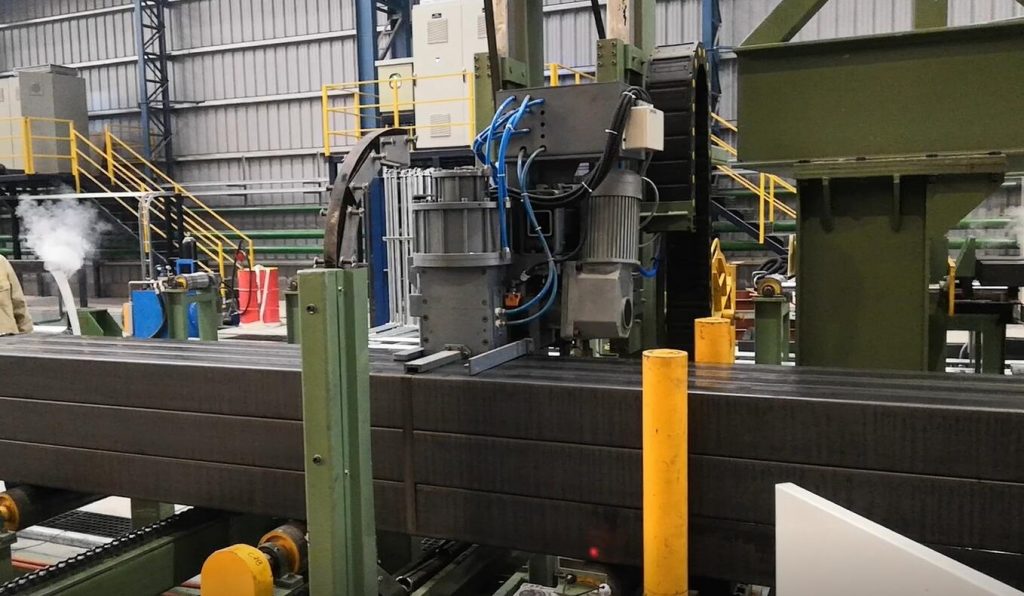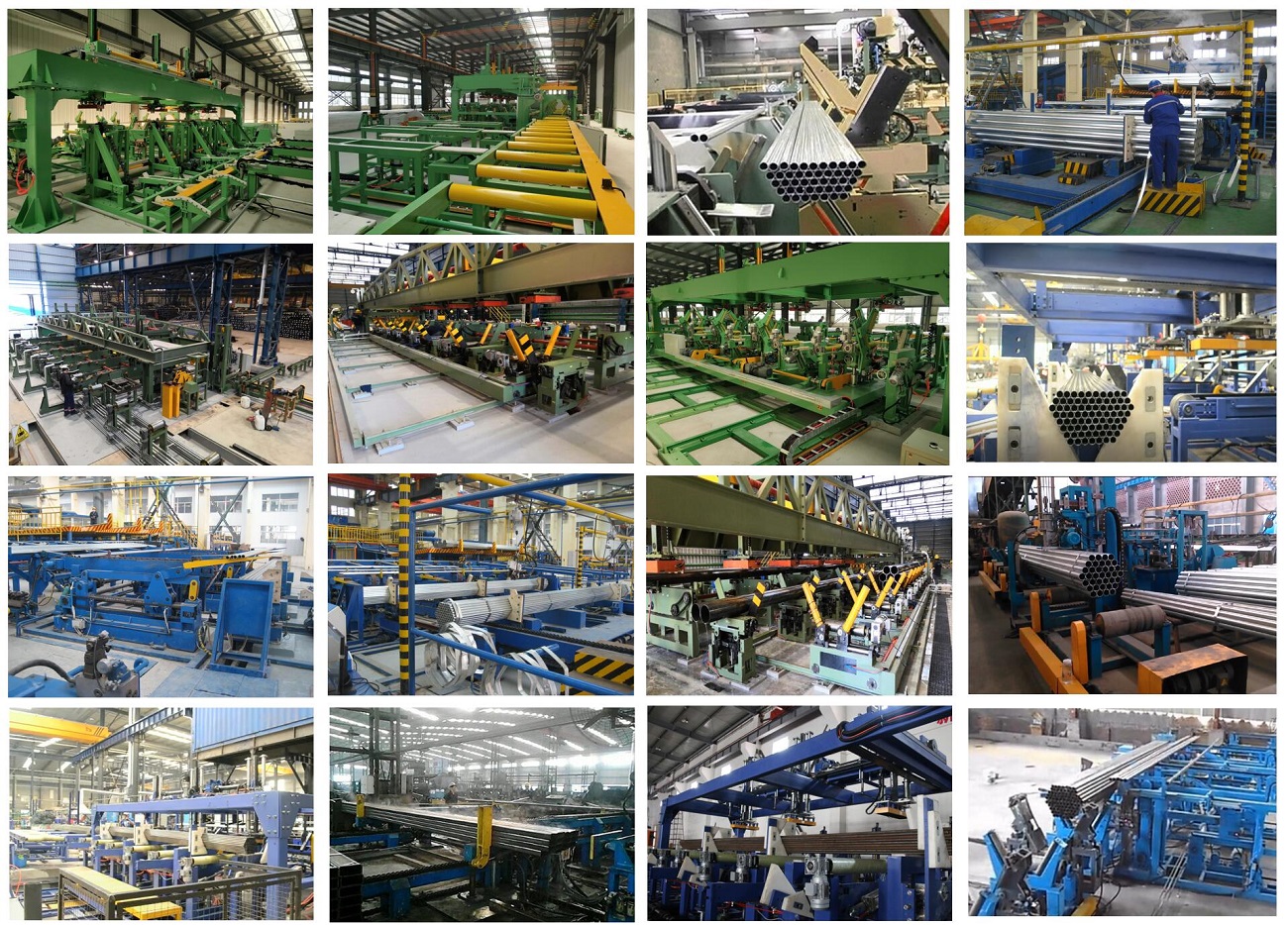Streamlining Operations: Understanding Automatic Pipe Bundling Machines and Packing Solutions
Handling large volumes of pipes efficiently and safely poses significant logistical challenges in metal fabrication and manufacturing environments. Manual methods are often labor-intensive, slow, and carry inherent safety risks. Implementing an automatic pipe bundle machine and packing solution offers a robust way to automate these processes, enhancing productivity, consistency, and workplace safety.

What is an Automatic Pipe Bundling and Packing System?
An automatic pipe bundling and packing system is an integrated line of equipment designed to autonomously collect, arrange, secure, and prepare pipes for shipping or storage. These systems typically handle pipes made from various materials (steel, aluminum, PVC, etc.) and accommodate a range of lengths and diameters, depending on the specific machine configuration. The core function involves receiving pipes, forming them into predetermined bundle shapes, securing the bundle (often with strapping or wrapping), and then discharging the finished bundle for the next stage of handling.
Key Operational Steps in Automated Pipe Bundling
While specific configurations vary, most automated pipe bundling systems follow a general process flow:
- Pipe Infeed: Individual pipes are fed onto the system, often via conveyors or accumulation tables.
- Alignment and Counting: Pipes are aligned and counted to match the required number for a bundle. Sensors ensure accuracy.
- Bundle Formation: Mechanical arms or forming stations arrange the pipes into the desired configuration (e.g., square, hexagonal, rectangular). This optimizes density for transport and storage.
- Securing the Bundle: An integrated automatic strapping machine applies plastic or steel straps at designated points along the bundle's length. Some systems may incorporate wrapping mechanisms for added protection.
- Bundle Discharge: The completed, secured bundle is moved off the main line, often onto exit conveyors, roller tables, or designated collection areas, ready for transport or storage.

steel tube bundle strapping machine Enhancing Efficiency and Reducing Costs with Automation
The transition from manual to automated pipe handling yields substantial operational benefits:
- Increased Throughput: These machines operate continuously at speeds significantly faster than manual bundling, processing a high volume of pipes per shift.
- Reduced Labor Requirements: Automation minimizes the need for manual handling, freeing up personnel for higher-value tasks and reducing direct labor costs associated with bundling and packing.
- Improved Consistency: Automated systems produce uniform bundles every time, meeting quality standards and simplifying downstream handling and storage logistics.
- Optimized Material Usage: Precise application of strapping or wrapping materials reduces waste compared to manual methods.
Customization and Flexibility in Pipe Packing Solutions
Modern pipe bundling systems offer considerable flexibility to meet diverse operational needs:
- Versatile Pipe Handling: Systems can often be adjusted or configured to handle pipes of varying diameters, lengths, and weights.
- Adjustable Bundle Configurations: Operators can typically select or program different bundle sizes and shapes (square, hexagonal, rectangular) to optimize packing density for specific transport or storage requirements.
- Integration Capabilities: Advanced systems can integrate with plant-level control systems (MES/ERP), incorporate weighing stations, automatic labeling, and interface with other automated handling equipment like cranes or AGVs.

steel tube strapping line Ensuring Safety in Automated Pipe Handling Operations
Safety is paramount in automated systems. Automatic pipe bundling machines incorporate multiple safety features:
- Physical Guarding: Barriers and enclosures prevent personnel from entering hazardous areas during operation.
- Safety Sensors: Light curtains, laser scanners, and pressure mats detect intrusions into restricted zones, triggering immediate stops.
- Emergency Stop Buttons: Easily accessible E-stops are placed strategically around the machine.
- Reduced Manual Handling Risks: Automating the lifting, moving, and strapping of heavy pipes significantly lowers the risk of musculoskeletal injuries associated with manual labor.
- Compliance: Reputable systems are designed in accordance with relevant safety standards, such as those outlined by OSHA or ISO.
Considerations for Implementation
Integrating an automated pipe bundling system requires careful planning:
- Footprint: Ensure adequate floor space is available for the machine and associated infeed/outfeed conveyors.
- Integration: Plan how the system will connect with existing production lines or processes.
- Maintenance: Understand the routine maintenance requirements to ensure longevity and optimal performance.
- Training: Operators and maintenance staff will require training on safe operation and upkeep.

In conclusion, an automatic pipe bundle machine and packing solution represents a significant step forward for operations dealing with pipe handling. By automating the bundling and securing process within a comprehensive automatic packing line, businesses can achieve notable improvements in production efficiency, reduce operational costs, enhance worker safety, and ensure consistent packaging quality suitable for transport and storage. Evaluating specific operational needs against the capabilities of available systems is key to selecting the right automation solution.